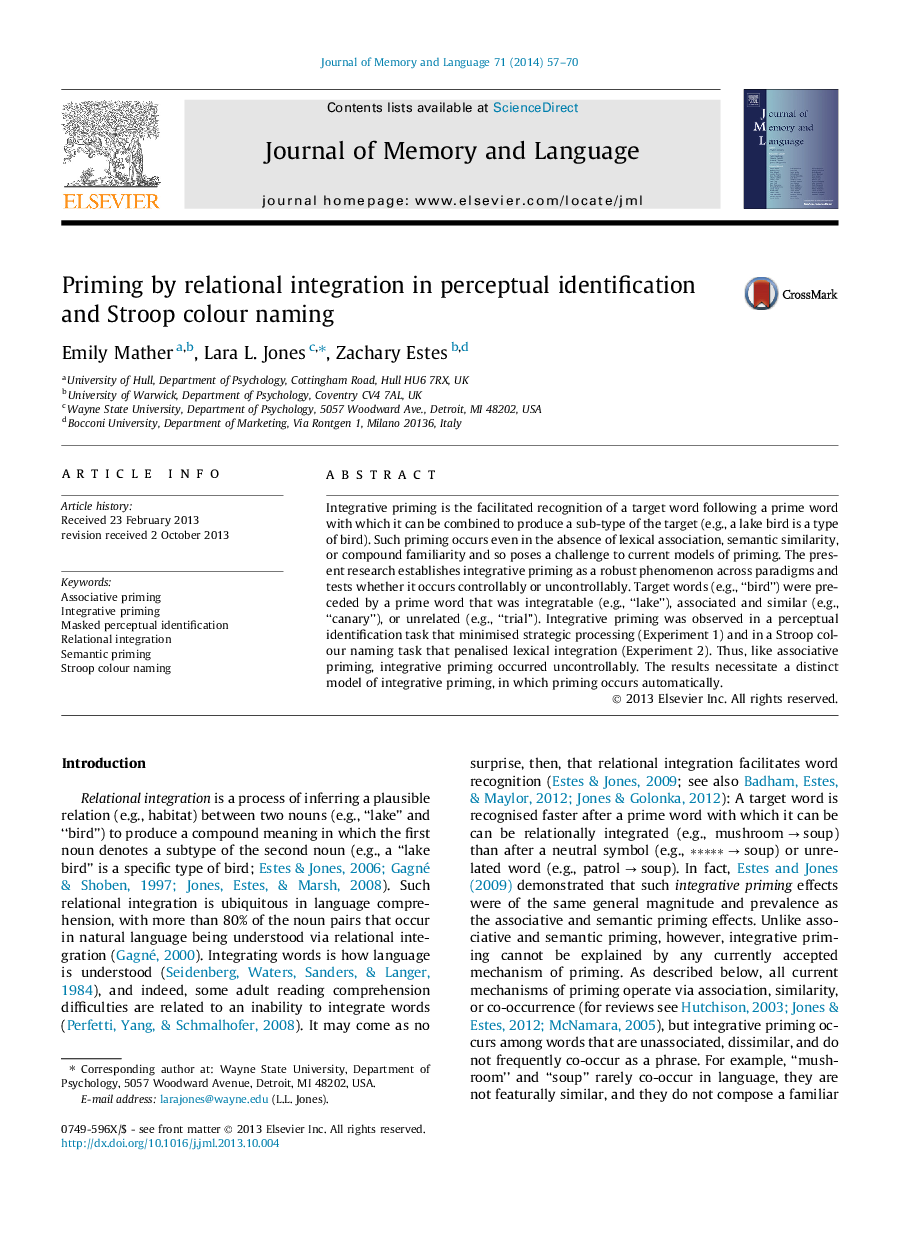| Article ID | Journal | Published Year | Pages | File Type |
|---|---|---|---|---|
| 10459725 | Journal of Memory and Language | 2014 | 14 Pages |
Abstract
Integrative priming is the facilitated recognition of a target word following a prime word with which it can be combined to produce a sub-type of the target (e.g., a lake bird is a type of bird). Such priming occurs even in the absence of lexical association, semantic similarity, or compound familiarity and so poses a challenge to current models of priming. The present research establishes integrative priming as a robust phenomenon across paradigms and tests whether it occurs controllably or uncontrollably. Target words (e.g., “bird”) were preceded by a prime word that was integratable (e.g., “lake”), associated and similar (e.g., “canary”), or unrelated (e.g., “trial”). Integrative priming was observed in a perceptual identification task that minimised strategic processing (Experiment 1) and in a Stroop colour naming task that penalised lexical integration (Experiment 2). Thus, like associative priming, integrative priming occurred uncontrollably. The results necessitate a distinct model of integrative priming, in which priming occurs automatically.
Keywords
Related Topics
Life Sciences
Neuroscience
Cognitive Neuroscience
Authors
Emily Mather, Lara L. Jones, Zachary Estes,
